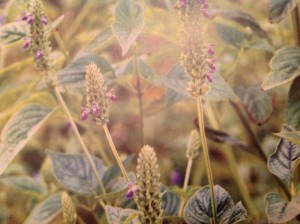In this section we are assembling materials that may be useful in developing curriculum around herbal remedies and other aspects of healthcare among indigenous peoples of Mesoamerica, before and after contact with Europeans. This is a sub-topic of ethnobotany due to the special use of medicinal herbs in many remedies and their role in steambaths, for instance.
Mexicolore Resources
- Mexican Herbal Medicines (Michael Heinrich)
- Herbal Medicine, Aztec Style (Corrinne Burns and Randolph Arroo)
- Aztec Herbal Pharmacopoeia, I (Corrinne Burns)
- Where Aztecs Meet Scientists (Corrinne Burns)
- Plants Used for Reproductive Health among the Modern-Day Nahua (Vania Smith-Oka and Nancy O’Neill)
- Etnobotánica médica de los nauas de la Huasteca, México/Xiuipajmatilistli tlen nauamej tlen uaxtekapaj tlali ipan mexkotlatokajyotl. (Doctoral thesis about biodiversity, by Victoriano Hernández Martínez, 2013, University of Barcelona. Downloadable.)
- Las enfermedades mentales son enfermedades del corazón (Patricia Landa Durán)
- UK Resources on Aztec Medicine
- Health Profiles: Aztec Warrior v. Spanish Conquistador
Additional Resources
- “Badianus Manuscript: An Aztec Herbal, 1552” (University of Virginia)
- An Aztec Herbal: The Classic Codex of 1552 (offered by Google Books)
- “Intro to Meso-American Medicine: Codex de la Cruz-Badiano,” a blog, 2011
- Francisco Guerra, “Aztec Medicine,” Medical History journal, full text article from 1966 with images

The indigenous steam bath, or temazcalli, the term in Nahuatl. This eighteenth-century form has evolved quite a bit from the pre-Hispanic version. (From a manuscript made in Mexico in 1777 about cochineal.)
Chia
Salvia Hispanica (chia) is a member of the mint family and is native to central and southern Mexico and Guatemala. This plant appears in the Florentine Codex and the Codex Mendoza. It was cultivated in pre-Columbian times for its nutritious seeds, which have been used for millennia in beverages and foods. The name “chia” comes from the Nahuatl word “chian” (oily). Chia is high in Omega-3 fatty acids, contributing to a healthy heart. A Doctor’s Health Press report from December 30, 2013, summarized in the Examiner in January 2014, suggests that chia may also help prevent diabetes and cancer. About a half-million chia “pets” are sold in the U.S. annually as novelties or as house plants.
Epazote
Epazote (from epazotl, also spelled apazotl, in Nahuatl) is a seasoning herb or mint that also has medicinal values. This plant was chosen by a Mexican living in New York City for a culturally relevant garden created in collaboration with immigrants by the “Outer Seed Shadow” organization (thank you Ana Orozco for sharing this with us!).
Curricula from 2010
- Irma Vega, “Health and Illness in Mesoamerica: Then & Now” (High School Social Studies)
- Lesson Plan (DOC)
- Lesson 1 Materials
- Joie Davidow – “Magic and Medicine” (PDF)
- Gist Summary (DOC)
- Guiding Questions (DOC)
- Lesson 2 Materials
- An Aztec Herbal (PDF)
- Vocabulary Companion to An Aztec Herbal (DOC)
- Excerpts from Groark (DOC)
- Tonalli, Midwife & Mother (PDF)
- White Willow (PDF)
- Zoapatle (PDF)
- Susto Excerpt (DOC)
- Codex Mendoza Image (PPT)
- Plants Handout (DOC)
- Answers to Plant Handout (DOCX)
- Remedies Employed by Aztecs Table (DOC)
- Template for Entrance – Exit Slip (DOC)
- Author Says I Say (PDF)




